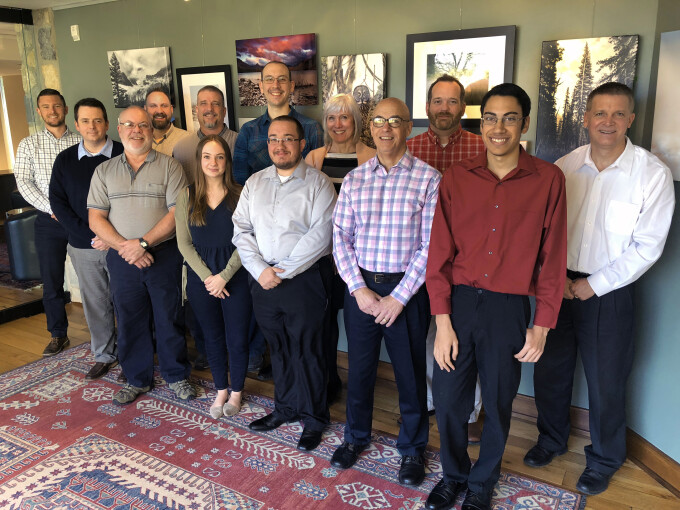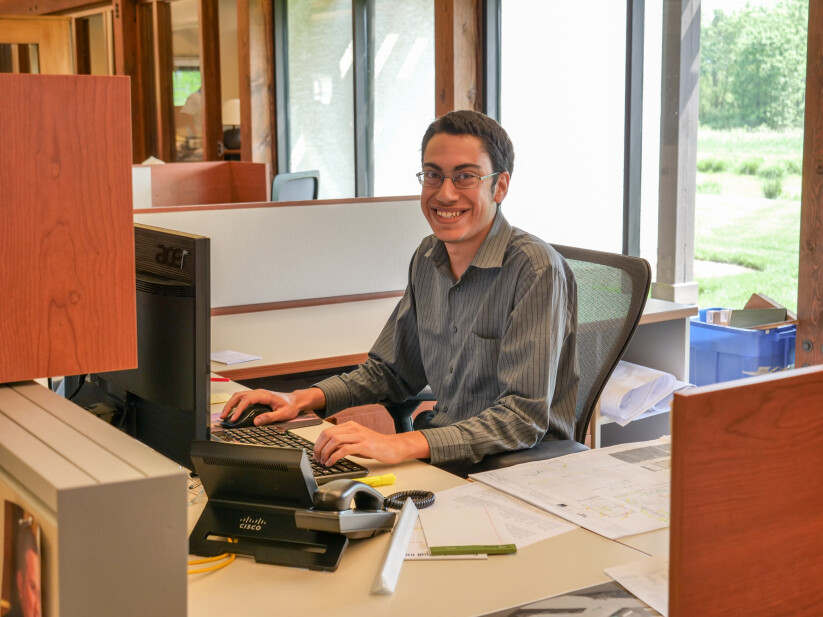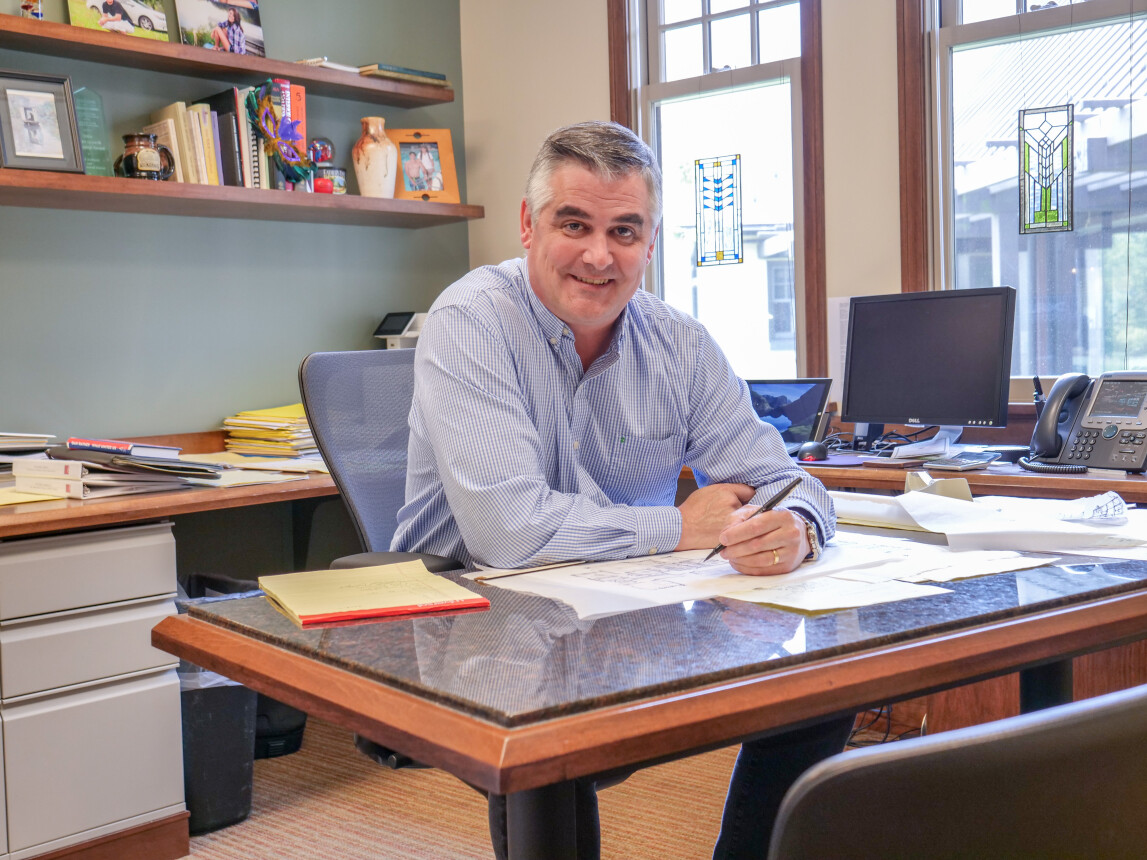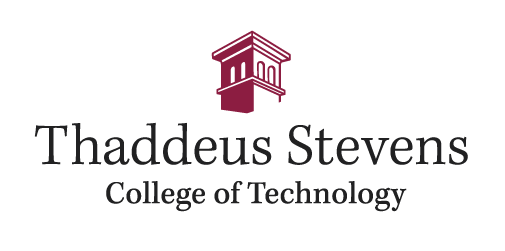40 years of growth

Thaddeus Stevens grads play vital role in leading architecture firm
Samuel Betancourt went to work at his first job about a day and a-half after removing his cap and gown from Thaddeus Stevens College’s 2014 commencement. After another 18 months, he took a new job at RLPS Architects, and he’s loved his career since then.

Samuel Bentancourt '14
Samuel is not alone. He’s one in a long line of Stevens alumni—currently, he’s one of 14 on staff—to join the RLPS team.
“I can’t imagine what we would be, or who we would be if Thaddeus Stevens didn’t exist,” says Craig Kimmel, one of the partners who has been with RLPS since 1988. “It’s been a great relationship.”
 Craig P. Kimmel, Partner, RLPS employee since 1986
Craig P. Kimmel, Partner, RLPS employee since 1986
The connection runs all the way back to George Lower, ’65, who started as a draftsperson with Haak & Kaufman and worked his way up to becoming partner by the time the firm changed its name to Reese, Lower, Patrick & Scott in 1982. He’s still the “L” in the RLPS, even though he’s retired and the firm is up to 14 partners.
“The quality hasn’t changed,” says Richard Dropik, another partner. “They can still be George Lower in 20 or 25 years.”
Dropik says Stevens graduates combine two key skills the firm is looking for: experience using Autodesk Revit, the industry standard software for modeling building designs in 3D, and a technical knowledge of how buildings are put together.
“I can’t think of anything that someone from Stevens doesn’t do for us,” Dropik says. And he would know—Dropik is the partner most responsible for building teams to execute the firm’s projects. Alumni provide detailed drafting services, produce computer-generated renderings, conduct in-field building surveys, as well as help with construction administration work.
 Justin Martin '06
Justin Martin '06
Take Justin Martin, ’06, for example. Colleagues say he’s one of the most accomplished Stevens grads at RLPS, and he’s done “a little bit of everything” for the firm, including drafting, Revit, IT, 3D technology and 3D printing. In fact, he developed a test the firm now gives to new employees to determine their proficiency with the firm’s software. He’s even done a few stints as an adjunct faculty back at his alma mater.
“I think the best part about Stevens was that It really prepared you and gave you a sense of everything the field has to offer,” he says. “We touched on everything—drafting, design history, code analysis It was a good eye opener for what we would face when we graduated.”
He describes the value of his Stevens degree as “fantastic,” setting him up for a career with no debt, and believes it can take him far in the industry. “I’m one of the people who wants to push that degree as far as I can take it. We have people here who all they want to do is draft, and that’s great. But me, I want to go farther than just drafting.”
Some grads, like Lisa Cowen, ’00, become registered architects, which today requires at least a five-year undergrad program or a master’s degree. Cowen spent seven years driving to Drexel University twice a week before earning her license.
Her license, combined with her experience in corporate architecture at Fulton Bank, makes her one of the firm’s top interior architects.
“I loved my two years at Stevens,” she says. “We had such a great class, and there was such support for each other. I’ve stayed in touch with some of the people, and they’re all in high-level positions, I would say.”
Samuel Betancourt is one of the younger employees at RLPS, but he’s already making a name for himself for his work in 3D modeling.
“I work with people who get hired with five year degrees from Penn State who know all the architectural stuff,” he says. “But when it comes to [Revit], there are just some things that they can’t do that I find easy and that I’ve done a million times before.”
In addition to technical training, Stevens also changed his life.
“I would not have gone to college—at all—if it hadn’t been for the Stevens Grant,” he admits. “I can’t say enough about how amazing that has been for me.”
RLPS has grown by a third since moving into its new facility almost five years ago, and it’s hiring now. The partners say Stevens will continue to be one of its top feeder schools.
“The bigger the projects that come through the office, the more need we have for technically-trained people,” Kimmel says. “Beyond the skill set, their ability to work hard, to understand what it means to work hard, to have a good head on their shoulders so they have growth potential.”
Dropik agrees. “The quality of the education—and the person—is top notch. We’ve seen that consistently; that’s the important thing. It started with George Lower 40 years ago, we have students from last year—and it’s no different.”
Thaddeus Stevens College of Technology is consistently ranked as Pennsylvania’s best technical college and awards associate degrees in 22 high-demand, skilled occupations. A full listing of programs is available at www.StevensCollege.edu.
For more information contact


